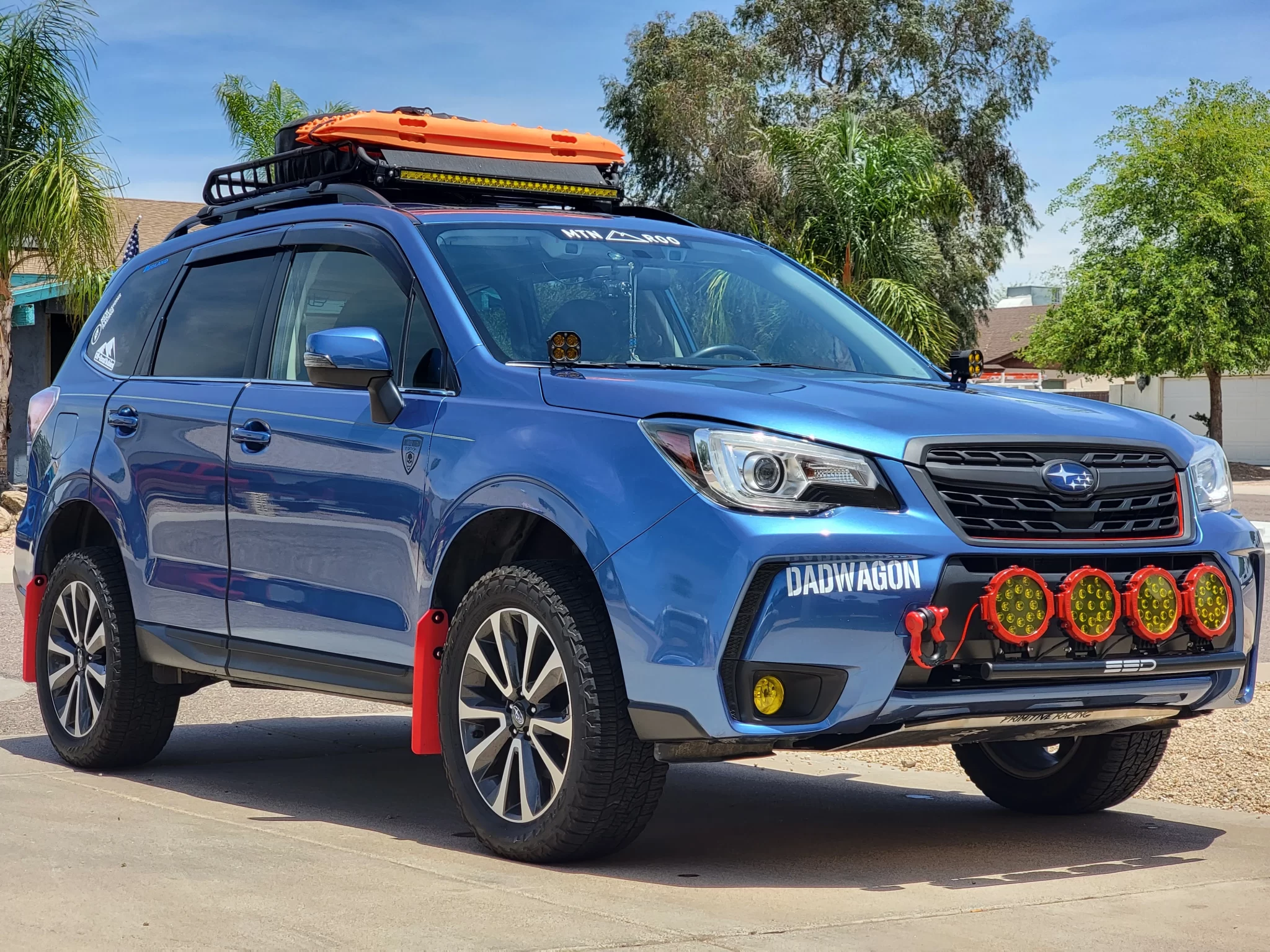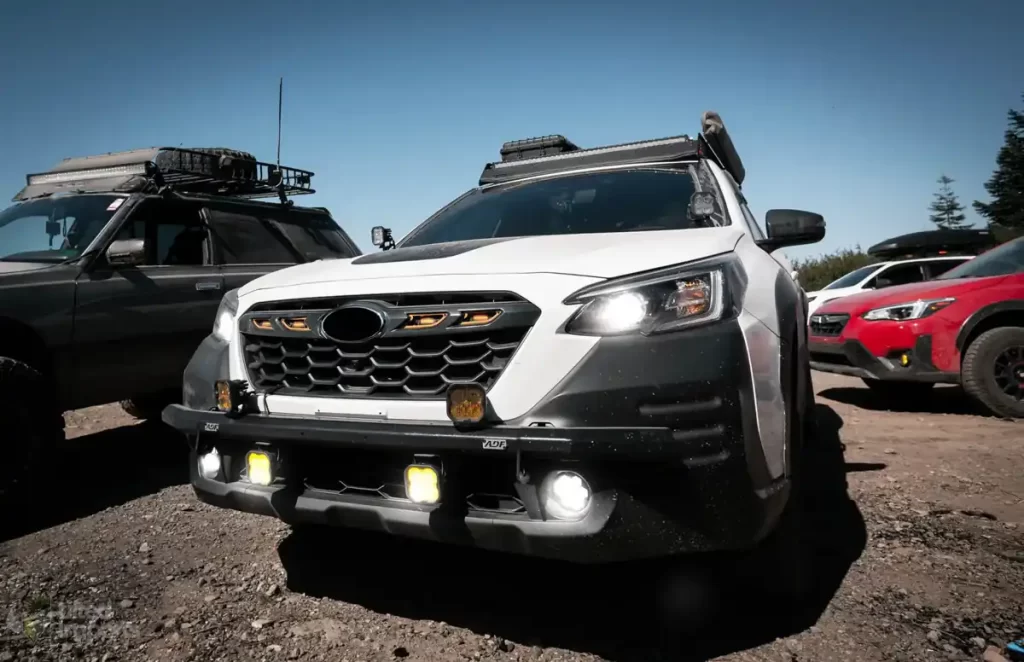
Three different Subaru lift kit sizes to consider. Which is right for you?
By Ben Boxer
Last updated on June 20th, 2024
Subarus are known for their versatility and off-road capabilities while still being efficient in stock form. But for those looking to take their adventures to the next level, lifting your Subaru is a game-changer. But there’s three tiers of lift size to consider and it can be confusing deciding which one is right for you. Whether you’re a weekend warrior or an experienced off-roader, this guide will help you navigate the different sizes of Subaru lifts to suit various preferences and needs.
I consulted with Patrick Anderson of Anderson Design and Fabrication to get his input on my thoughts about lifting Subarus. You’ll find his insights throughout this article and they’re certainly worth the read.
Here are three common tiers of Subaru lift kits ranging from simple to advanced:
- Small Lifts: .5-1 inches (Simple Installation)
- Medium Lifts: 1.5-2.5 inches (Medium Install Process – Best Choice For Over 90% Of Subaru Owners)
- Large Lifts: 3 inches and up (Advanced Installation Requiring Substantially More Parts And Knowledge)

3 Common Tiers Of Lift Kit Sizes:
Deciding how big of a lift to put on Subarus may seem intimidating at first, but we’ll look at each tier and give some explanation to help you decide what’s best for your needs.
Small Lift Kits- .5 to 1 inch
Small lift kits are great for leveling a sagging rear suspension or fitting a slightly larger tire. These lift kits can usually just slide over existing strut mount bolts and require the least amount of work to install. Subarus with a half to whole inch lift can safely drive on most mild gravel roads and forest service roads without sustaining damage. However, for those wanting to do more advanced trails, a small lift won’t provide enough clearance.
These lift kits are typically made from HDPE which is durable and doesn’t rust. But you may also find some steel versions as well. Additionally, you may also be able to find lift springs that offer .25 to .5 inches of lift.
Small lifts are good for the following needs:
- Slightly higher ride height on pavement to improve visibility
- Retain daily drivability while having slightly more ground clearance
- Very basic dirt road navigation and level 1 rated trails and possibly level 2 for Outbacks, Foresters, and Crosstreks already fitted with aggressive tires (I prefer the onX Off-Road trail rating system)
- Fitting studded snow tires that require slightly more clearance
- Fixing rear suspension “butt sag”
- Occasional off-pavement use
Medium Lift Kits- 1.5 to 2.5 inch (Best bang for the buck)
Medium lifts are usually the right answer for most Subaru owners. They provide a healthy mix of capability and ease of installation that meets the majority of our needs. A 1.5-2.5 inch lift kit doesn’t require spacing down the engine, transmission or differentials but still provides enough clearance for bigger tires. I am currently using a 2 inch front and 2.5 inch rear lift kit on my Subaru and have been very satisfied with it. There have been no issues with my CV axles or drivetrain despite using the car on some more advanced trails.
Medium size kits from reputable manufacturers will include the following components:
- Strut spacers or longer shock/strut assemblies
- Trailing arm spacers (for Subarus with Macpherson style suspension) or rear subframe spacers (multi link suspension models)
- Brake line spacers where necessary (Subarus with multi link suspension will typically need these at this lift height)
- Necessary hardware for installation
Medium lifts are good for the following needs:
- Installing a large enough tire for medium off-road usage
- Navigating level 1-3 rated trails without sustaining major damage to your Subaru.
- Regular travel off-road
- Still retains enough comfort and reliability for most daily driving needs
- Creating off-road capability without serious modification
Large Lift Kits- 3 inches and up
Large lift kits on Subarus are typically reserved for two types of people: Those who want to build their car to the absolute limit for off-road capability, and those who don’t necessarily need the extra clearance but simply like the idea of having one of the biggest lifted Subarus. When I interviewed my friend Ryan who owns a lifted Outback, he explained that he installed a 3 inch coilover lift because “I wanted the biggest baddest Subaru possible.” And there’s nothing wrong with that! I really like seeing Subarus that have been lifted above the 2.5 inch mark.
There are also people who enjoy the easier entry/exit of driving a Subaru with a larger lift. Patrick at ADF mentioned this saying “If you’re a big taller guy like myself that is another reason a larger lift kit on a Subaru is nice. We sell a lot of lift kits to people who honestly just want to be able to get into their Subaru more easily.” I myself have multiple back injuries and find it easier to get into my lifted Subaru when compared to my lower daily driver even just at 6 feet tall. I can absolutely see why taller drivers would prefer a bigger lift.
Large size kits from reputable manufacturers will include the following components:
- Large strut spacers or longer shock/strut assemblies
- Large trailing arm spacers (for Subarus with Macpherson style suspension) or rear subframe spacers (multi link suspension models)
- Brake line spacers where necessary
- Large front subframe spacers
- Driveline (carrier bearing) spacers
- Necessary hardware for installation
If you see a lift kit advertised as being 3 inches or above and is not advertised as containing the majority of these components, contact them or reach out to others in the lifted Subaru community to determine if it’s a quality kit.
Large lifts are good for the following:
- Installing the largest possible tire for advanced trails
- Subarus that have a dual range transmission swap that can handle heavy tires
- Navigating 1-4 and maybe level 5 rated trails (refer to the onX Off-Road trail rating system for trail rating criteria)
- Almost exclusive off-road driving
- Driving trails where higher approach and departure angles are needed
- Good for dedicated wheelers or those who don’t mind the additional maintenance of max lifted Subarus
- Wheeling trips in deep snow or mud where becoming high-centered is likely (the added body clearance of these lifts helps a lot in these situations)
Things to consider with larger lift kits:
- Custom steering linkage needs to be fabricated. Most people usually cut their steering shaft and weld an extension into it
- Extended brakes lines may be necessary in some cases
- Radiator hoses must be lengthened
- Pitch stop mounts may need to be custom fabricated
- Exhaust hangers may need to be extended
- Despite having more body clearance, large lift kits don’t allow for a much bigger tire than a 2 inch lift kit as the transmission and differential gearing is usually the limiting factor
- Your differential, engine, and driveline will have to be spaced down to protect the CV axles and will offer the same drivetrain clearance as a 2 inch lift kit
Check out this 4 inch lifted Subaru WRX to get an idea of some of the parts that may be required to complete a large lift kit installation:
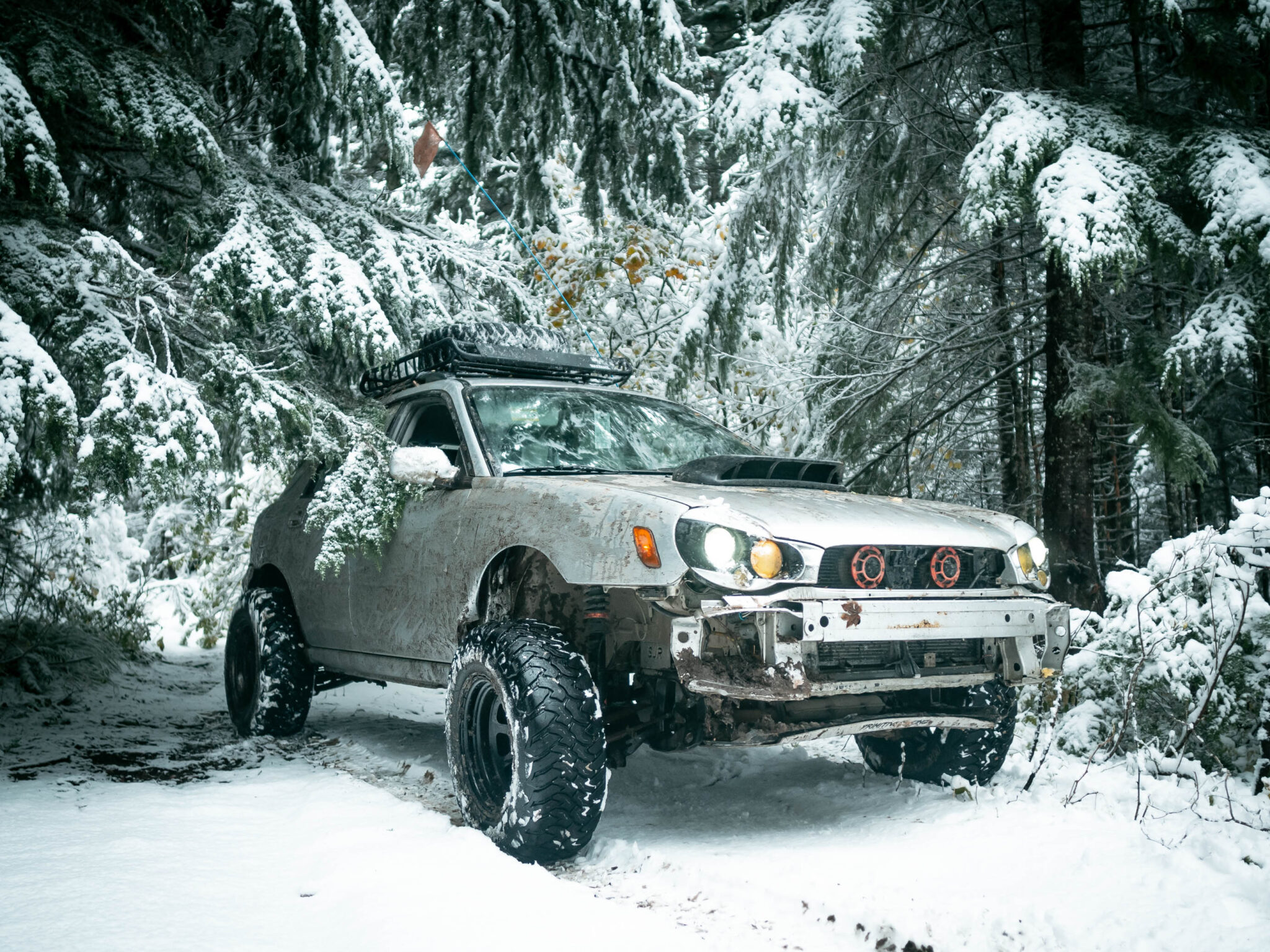
This photo of a 5 inch lifted SG Forester was taken by the guys over at ADF. You can see how much more clearance the body of the Subaru has, but the engine, exhaust manifold, transmission, and exhaust are all still relatively close to the ground. So drivers will still need to be conscious of these components while navigating obstacles even with a large lift.
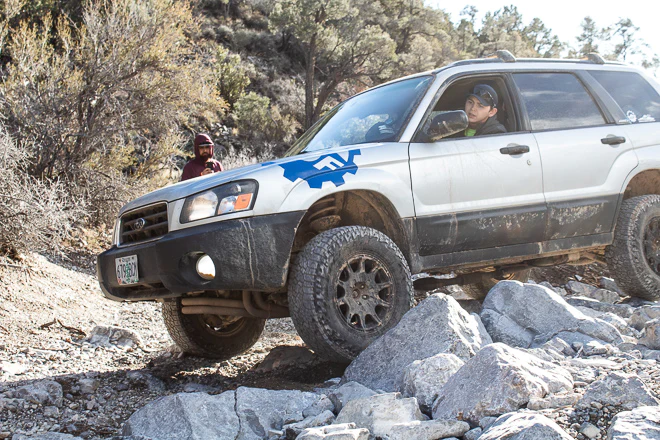
Which Lift Kit Should You Buy?
If a Subaru will be mainly used for daily driving and very light dirt road use, a small lift up to 1 inch is more than enough. This is also the best lift kit size for someone who’s just planning to fit a slightly larger snow tire. Sometimes snow tires aren’t available in the exact size as the stock tires and require a little more clearance. Additionally, if someone is trying to solve a “butt sag” issue, a small spacer in the rear can help. Rear sag usually occurs from carrying extra gear in the vehicle or running a rear tire carrier. In some cases, tired springs and other worn suspension components can cause it as well.
I would argue that for most people a medium lift kit is right choice as it provides the perfect mix of affordability and capability. This size of lift will allow you to fit nearly the largest tire that your Subaru can handle without bogging down the engine and transmission. Many of the most respected 1.5-2.5 inch lift kits cost less than a set of stock tires. But a larger lift can run 4x that price.
Larger lifts are usually best for those who are true off-road enthusiasts and need the absolute most body clearance possible. They are also good for people who simply want their Subaru to be as tall as possible and don’t mind the extra work or financial implications of installing a large lift kit.
Because of the added number of extra parts that have to be made to support a larger lift kit, they are simply just more expensive to fabricate. To give you an idea of the possible price difference from 2 to 4 inch lifts, my friends over at Anderson Design and Fabrication offer a fully equipped 2 inch lift for the 09-13 Subaru Forester for $599. However, when it’s in stock, the 4 inch lift for that same vehicle sells for $2,360. For most people, the 2 inch lift is going to provide more than enough capability but cost substantially less and be easier to install.
I reached out to Patrick at Anderson Design & Fab to pick his brain and talk about lift kit size selection. When I mentioned that I believe a large majority of people would benefit the most from a mild lift, he agreed and said:
“That would be spot on. A mild lift would be perfect for 99% of people. For that 1% of people who want to go larger, they are obviously going to run larger tires and be doing substantially more than just going down to the grocery store. The biggest advantage of a larger lift is the ability to run larger tires. This will gain you more ground clearance despite lowering the subframe.”
What's The Biggest Lift You Can Put On Your Subaru?
Everyone wants to lift their vehicle as much as possible. But is there a limit to how far you should go? Patrick weighed in on this question as well and made some distinctions regarding the max lift sizes for newer and older Subarus.
Max lift will vary on model and year. For older non multi link Subarus, I think 6″ is the biggest I would ever recommend.
Any larger than that and the subframe spacers get huge and look silly. They also start to put more shear force on the body capture nuts.
For newer multilink subarus (all current Subaru suspension setups) 4″ is about as large as I would recommend. With that being said, can you get one of those for your subaru? Probably not, as we are the only manufacturer out there who has done it up to current years.
Our 2022 Wilderness for example, is a little higher than 4″ as they come with a factory “lift” if that’s what you wanna call it. It sits at about 5″ of lift over a stock outback. This is not counting tire size like some like to do. It’s running 265/65/17’s which will gain about another inch of overall ground clearance.”
Most Common Issues After Installing A Lift Kit
A lot of owners are afraid to lift their Subaru because of the dreaded problems that it can supposedly cause. This was another area where I wanted Patrick’s input. I’ve seen various problems arise after installing a lift kit, but these are limited to the experiences with my own vehicles and those that I run trails with.
I wanted to gain more insight on what types of problems other people may be having. Most of his answers were pretty on point with what I’ve seen and should provide a good list of things to be aware of before lifting.
CV joints are possibly the most common thing but it’s a slightly complicated issue. We recommend the Cardone HD axles over anything else. But if they are not offered for your model OEM is the next best option. The majority of the time, we get calls due to customers having cheap aftermarket axles in their rig. They put the lift on and have problems instantly such as vibration on acceleration, clicking in turns ect. But the problem is almost always remedied by installing a better axle.
Alignment problems are also a common question we get asked about. But it’s usually only cause by 3 issues: if the spacers are installed in the wrong orientation since ours have camber correction built in, if the alignment shop doesn’t know what they’re doing, or if the car is worn out. (ie bent frame, worn bushings, old suspension components etc.)
I actually agree 100% with Pat on his point about CV’s. For years I have had the suspicion that most CV axle issues related to lifting are either due to cheap axles, or the abuse that comes with the offroad driving that people do immediately after lifting their vehicle. I wrote an entire article about CV axle failures and outlined my own experience driving lifted Subarus for many years without having nearly the same axle problems as others.
As for alignment problems, I’ve also never had any issues aside from techs not being familiar with aligning Subarus, or having damaged suspension components. As much fun as it is to bounce around on boulders, it’s hard to align a Subaru with a bent lateral link…
Another thing that I have seen that Patrick didn’t mention here is worn out transmission mount bushings. Sometimes after lifting a Subaru, a bushing that is weak can present itself more prominently in the form of driveline vibration. The OEM transmission mounts are designed with a lot of space in them that can be improved upon even if they’re brand new in my opinion. A simple “anti-wobble” insert can usually fix vibrations, tighten up your drivetrain substantially, and reinforce the bushing for longevity. I purchased the 60d version that is slightly softer for maximum comfort.
For those wanting to improve their Subaru’s off-road capabilities, lifting the car is the key modification to open up a wide range of new possibilities. Lift kits are the prerequisite for things like bigger tires, Torq Lockers, and aftermarket bumpers. After reading this guide you should feel more equipped equipped to choose between a small, medium, and large lift kit for your vehicle. Feel free to drop us a line and let us know how your offroad journey is going!
I also want to give a massive thanks to Pat over at ADF for taking time to share his thoughts with me on this topic. Head over to the Anderson Design website to check out their gear!
Four Most Common Methods For Lifting Subarus
Before we jump into the different lift kit sizes, let’s take a look at the four most common ways to lift a Subaru.
- Strut spacers
- Lift springs
- Custom extended strut/spring assemblies
- Long travel coilovers
Strut spacers are the most common, most reliable, and easiest way to lift a Subaru. Strut top spacers come in a few varieties including steel, aluminum, and HDPE. They can also range in sizes from around a half inch to 2.5 inches, and even all the way up to 6 inches and beyond in some rare cases. For the majority of Subaru owners, a steel strut spacer is a great choice.
Spacer lifts allows the vehicle to retain factory suspension components and ride quality. This means that repairs will be substantially less complicated and the car will maintain most of its handling characteristics.
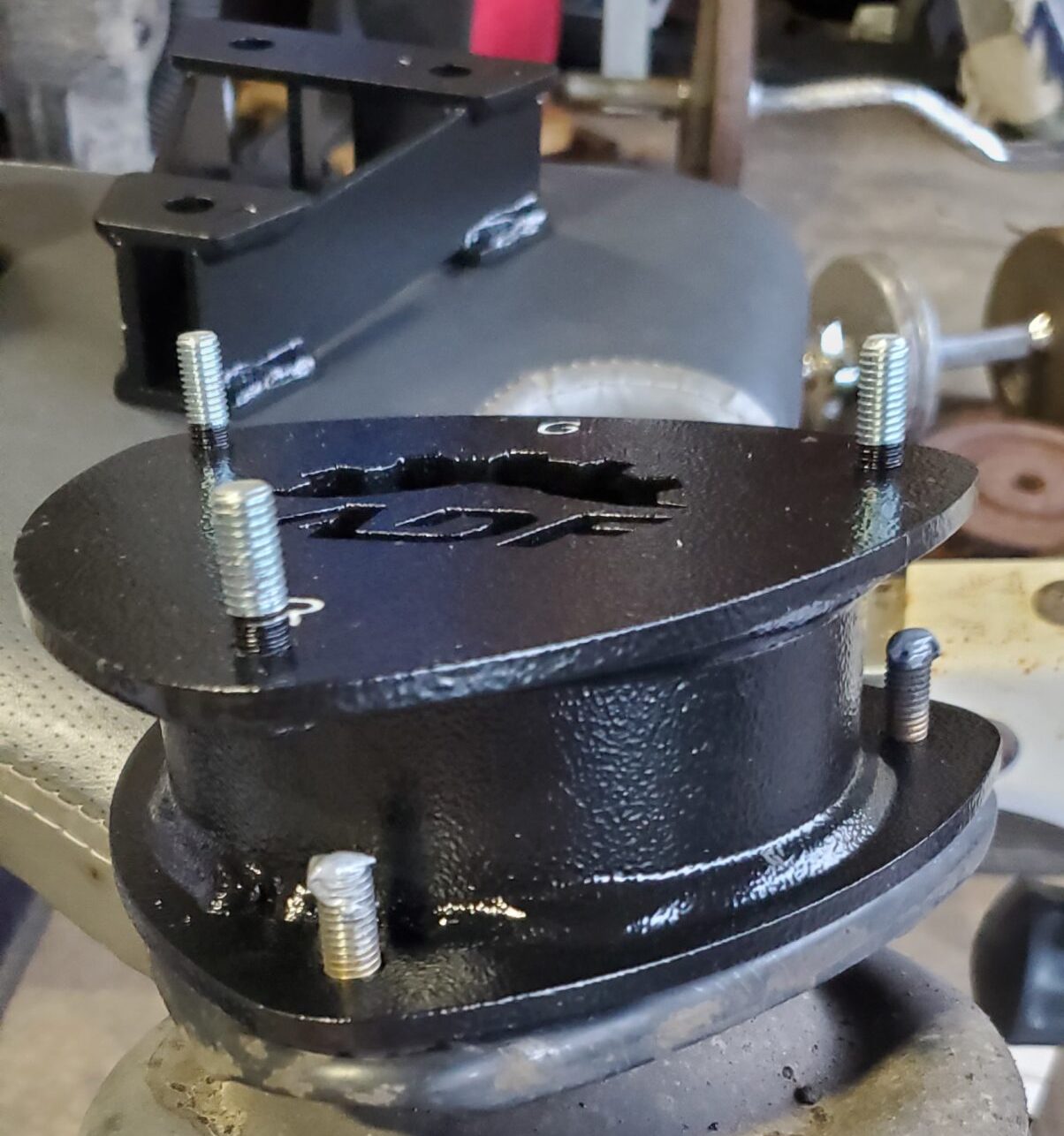
Lift springs raise your Subaru while providing additional stiffness to the suspension which helps cut down on body roll and increase the load capacity of the vehicle. Since many of the aftermarket coil springs are stiffer, they are a good option for someone who carries a large amount of heavy gear, has a rear tire carrier, or tows a small trailer. Some drivers may dislike the added stiffness since it may feel more harsh while other drivers who stick mainly to pavement may enjoy the “sportier” on-road handling. Lift springs are usually available in sizes ranging from a half inch of lift up to about 1.5 inches of lift.

One thing to consider about lift springs is that they do require disassembly of the vehicle’s suspension. This means installation should be done professionally or by very knowledgeable people with access to the proper tools. Keep in mind that there are some companies like Primitive Racing that do offer fully assembled KYB struts with King Springs that are ready to be installed.
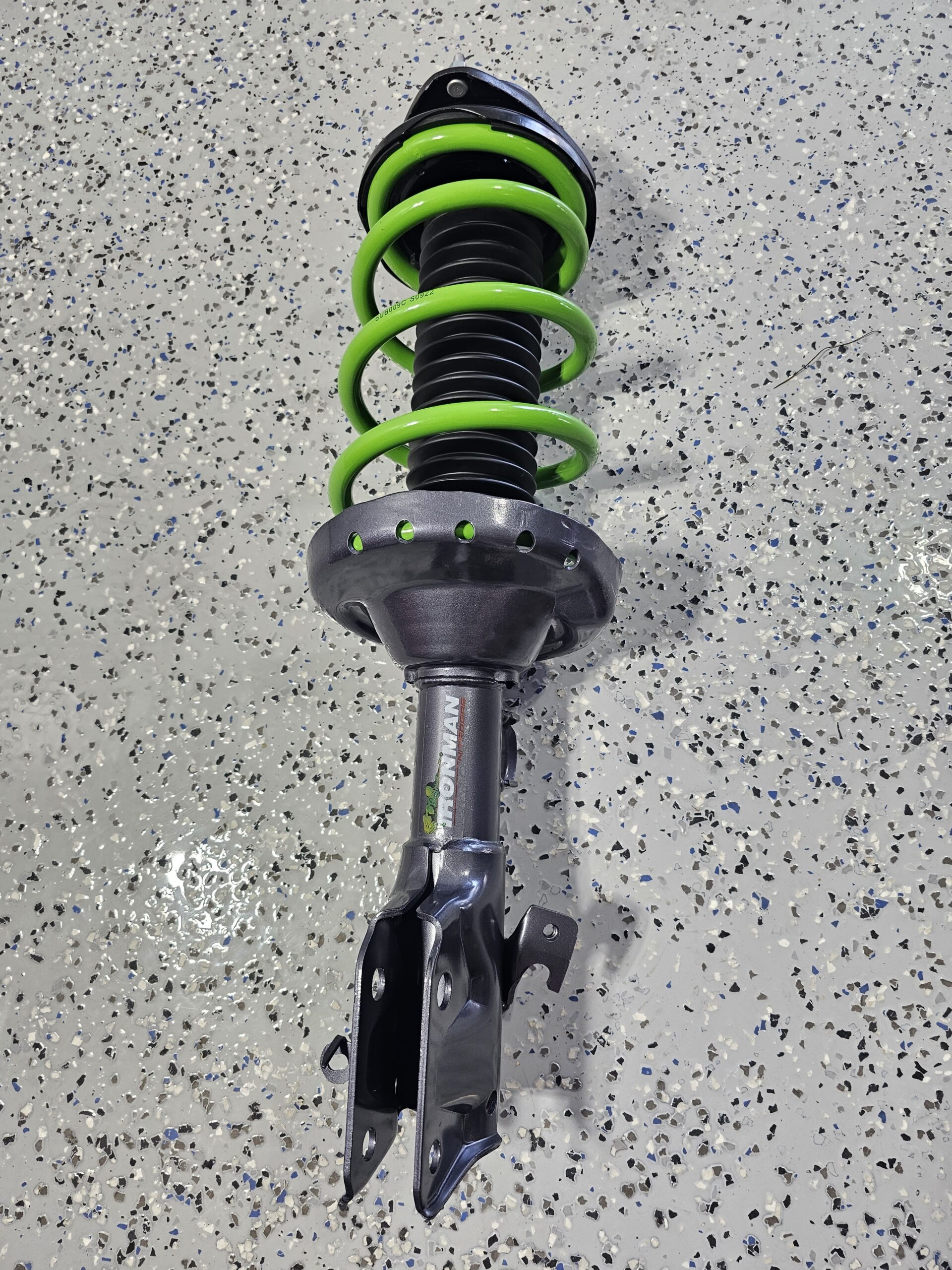
Extended strut and spring combos completely replace the factory suspension system with longer assemblies and are becoming popular in the Subaru community. They are available from a couple of companies now and incorporate additional ride height into the new strut assembly itself. The installation difficulty level is similar strut spacers since everything comes pre-assembled.
One consideration with this style of lift kit is that, being fully custom, they’re not readily available within a day to most people. If a replacement is needed, they can’t be purchased locally at a parts store. They typically need to be special ordered through the manufacturer.
Finally, we have long travel coilovers which also completely replace your vehicle’s strut and spring suspension but are adjustable and have a more compact design. Using this method to lift your Subaru is usually the most expensive but allows for a wide range of fine tuning adjustments.
Owners with some basic suspension knowledge can dial in their coilovers to the perfect height and the best dampening or “stiffness” for their needs. Coilovers do require professional help to properly set up and they demand a little more maintenance than a basic strut and spring system.
Long travel coilovers also need to be routinely cleaned and kept free of debris. Otherwise, they may seize up and need to be replaced if any height adjustments need to be made. And like the extended strut/spring lifts, these are also not readily available in the event of needing to replace a single unit due to damage or failure.
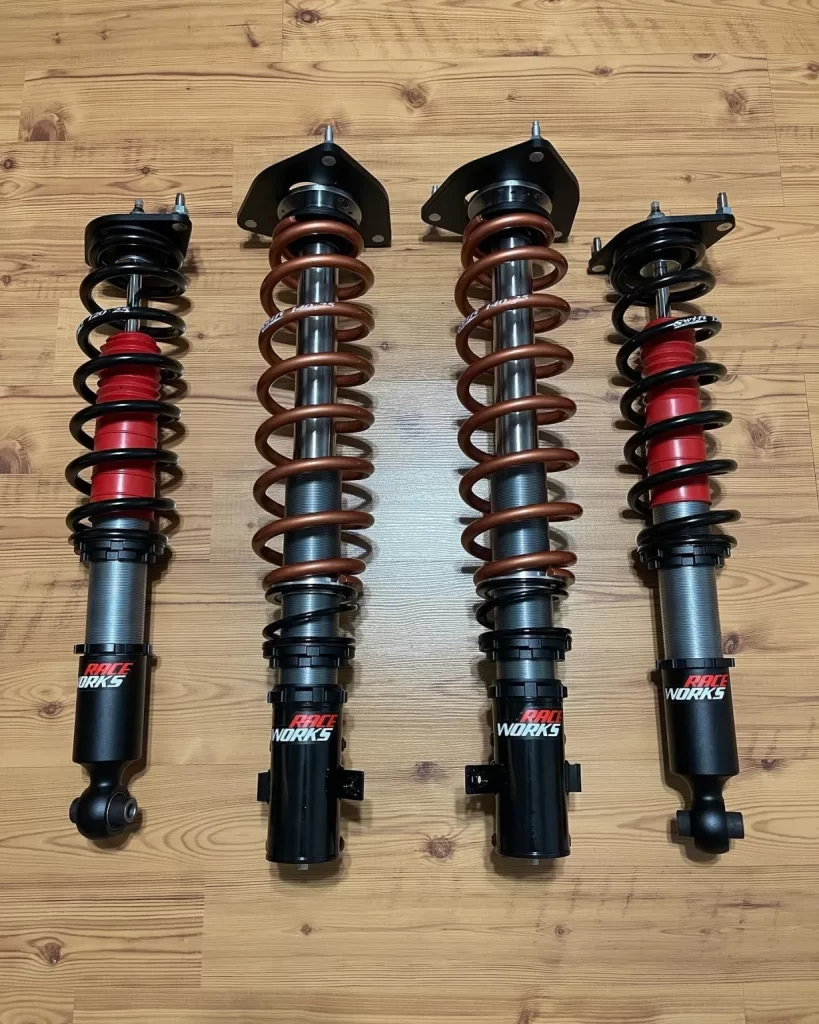
Is Lifting A Subaru The Same As Lifting A Truck?
I’d like to take a quick detour into the ongoing debate between lifting Subarus and lifting 4x4s, a topic that frequently sparks heated discussions among enthusiasts. The confusion often arises from the fact that lifting methods for Subies are less familiar compared to the more recognized approaches for body-on-frame trucks. This becomes particularly challenging when considering lifted unibody Subarus with a fully independent suspension.
I wanted some additional input about how this confusion affects enthusiasts. So I reached out to Patrick for his insights, and he shared the following thoughts:
There are a lot of misconceptions from people with prior experience in the truck world thinking the approach to lifting a Subaru should be similar. But there are actually very few similarities. There is no such thing as a body lift for a subaru. The conventional “body lift” is where you space the body off of the frame. Subarus are a unibody construction (meaning that the frame and body of the vehicle are physically built into each other,) so there is no body to space off of the frame.
While some may ask “what about the larger lifts out there for subarus where you use a subframe spacer?” it’s still not the same, as the body remains in the same place even after installation. You are just lowering the drive train to accommodate geometry and CV joint angles. As for the larger tires, subarus are still pretty limited in overall size, unless you get into cutting, hammering and offset wheels. Most are still going to be limited to the 5% larger than factory tire size (without modification) which 99% of the people out there will stay within.

